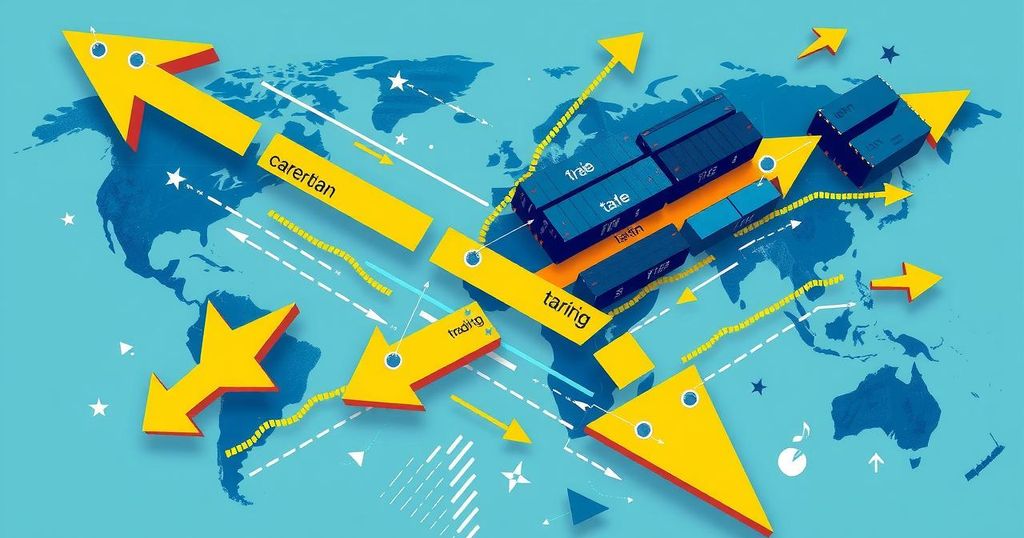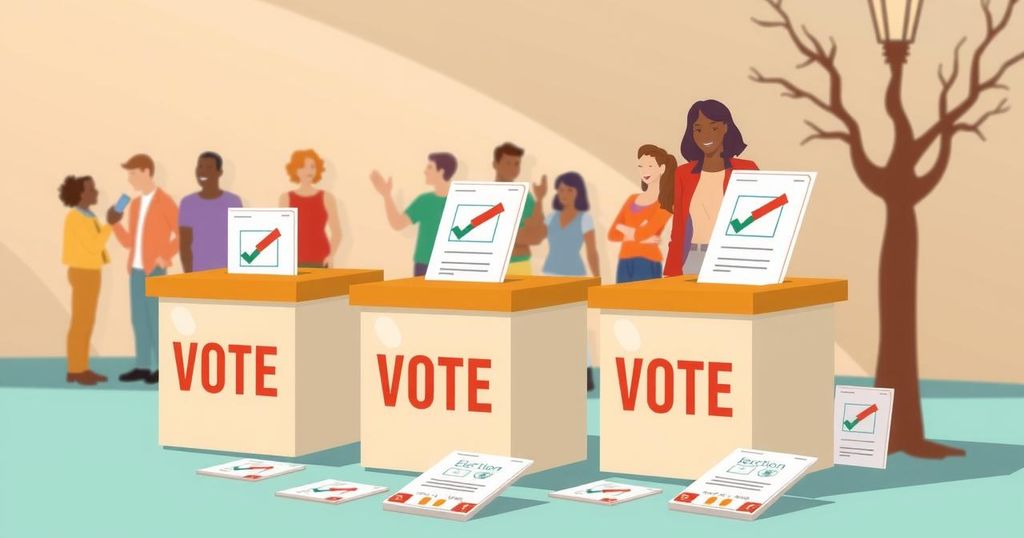President Trump is set to impose tariffs on Canada and Mexico starting March 4, alongside an increase in tariffs on Chinese imports. His decisions are driven by concerns over drug smuggling. The move is raising fears of economic turmoil, inflation, and a potential backlash against his administration. Trump is focused on broader tariff reforms, which may significantly affect consumer confidence and economic growth.
President Donald Trump has announced plans to impose tariffs on Canada and Mexico, set to begin on March 4. These tariffs are in addition to a doubling of the current 10% tariff on imports from China. In a statement on Truth Social, Trump expressed that illicit drug smuggling, particularly fentanyl, presents an urgent issue that necessitates these tariffs to compel other countries to address trafficking effectively.
Trump remarked, “We cannot allow this scourge to continue to harm the USA, and therefore, until it stops, or is seriously limited, the proposed TARIFFS scheduled to go into effect on MARCH FOURTH will, indeed, go into effect as scheduled.” He further stated that China will incur an additional 10% tariff on the same date.
The looming increase in tariffs has already unsettled the global economy, with concerns over inflation and potential repercussions for the automobile industry. This move may also ignite political backlash against Trump, who had previously assured voters that he could quickly reduce inflation rates that surged during President Joe Biden’s administration.
Moreover, Trump intends to address tariffs comprehensively, planning an additional round of tariffs on April 2, aligning them with taxes imposed by other nations on American products. He confirmed in his social media post that the tariffs set for April 2 will remain fully effective.
In his recent statements, Trump indicated that European nations would face a 25% tariff, and he seeks to impose tariffs on sectors such as automobiles, computer chips, and pharmaceuticals, supplementary to the reciprocal tariffs proposed. Furthermore, he is removing exemptions from the existing steel and aluminum tariffs and considering taxes on copper imports.
The potential for trade conflicts, should other nations retaliate with their own tariffs, could spook US consumers and undermine Trump’s claims to foster economic growth. The Conference Board shared evidence of rising concerns, as consumer confidence dipped significantly, highlighting the economic uncertainty brought about by these proposed tariffs.
Stephanie Guichard, a senior economist at the Conference Board, noted, “There was a sharp increase in the mentions of trade and tariffs, back to a level unseen since 2019.” The S&P 500 has mirrored this trend, experiencing declines over the past month, reversing gains made following Trump’s election.
In summary, President Trump has initiated a series of tariffs on imports from Canada, Mexico, and China, aiming to address national concerns over drug trafficking and to rectify perceived trade imbalances. This strategy carries the risk of economic backlash and rising inflation, potentially complicating Trump’s efforts to bolster economic growth. As these tariffs loom, consumer confidence is reportedly waning, possibly impacting the broader economy.
Original Source: www.business-standard.com




